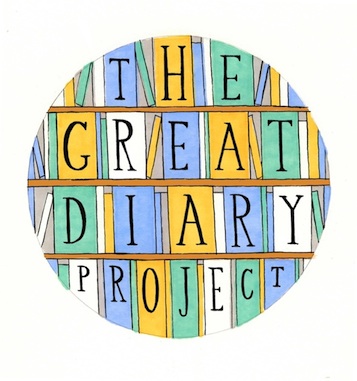I met academic Adam Smyth in his office in Bloomsbury, which turned
out to be part of Virginia Woolf’s old house – his room perhaps once served as
a bathroom to the Woolf household. It was a hot late-summer afternoon; light
streamed in through the window, illuminating piles of books and papers – academia in a heatwave some how brings Philip Larkin to mind.
I got in touch
with Smyth after reading his excellent book Autobiography
in Early Modern England, which describes how life writing began with
financial account books. It is perhaps these origins that still lend the medium a sense of authenticity, truthfulness and the obsessive compulsive Pooterish quality of
listing and dating specific events and quantities.
It's useful meeting someone in their office as you’re surrounded by their work and ideas –
Smyth’s floor to ceiling bookshelves displayed the type of fragmentary,
unorthodox, literary ideas that interest him. A side table was strewn with
flyers for an upcoming conference he was organizing based on ‘Book Destruction’
and ‘Missing Texts’, as he explained: ‘I’m interested in obscured texts –
defaced, cancelled, burnt– the pulping and cutting up of text... in some cases
books have been eaten...’ I could see immediately that diaries fitted into this
category as a form that is often thrown away, burnt, shredded, but eaten? More
on this later...
During his
research into the origins of autobiography he discovered that four kinds of
text appeared at his desk with particular frequency: the printed almanac
annotated with handwritten notes, the financial account, a common place book, and
the parish register. Smyth goes on to describe in detail how these forms merged
and bled into each other so that within an ordered conventional printed format
individual personal comments would be added and life writing began.
Smyth argues
however, that this didn’t exactly give way to a new culture of individualism
often associated with the Renaissance, but instead perpetuated a culture of
copying, or as Smyth eloquently puts it: ‘the pursuit of parallels’. People
sought to explain themselves and shape their identitites by quoting others, by
connecting their life with figures from the past, for example the “Royalist Sir
John Gibson who was imprisoned in Durham Castle in the 1650s conceived of his
life as a retelling...as one more iteration of a type from Ulysses and Ovid”. In our own collection I can see how this is true - many diarists quote from other texts and mysterious half-remembered sentences lifted from unknown sources appear, faintly penciled in - fleetingly you feel the pressing nature of a sentence that had obviously been running through their mind all day. I was struck recently by a series of pocket diaries from the 1950s written by a man on business trips between Stockholm and London, which included several drifting lines of romantic poetry.
Life writing
began as an obscured form fighting its way out of the margins of prescribed text
– the human need to articulate their own experience is felt
here, but often placed behind smoke screens of other people’s language.









